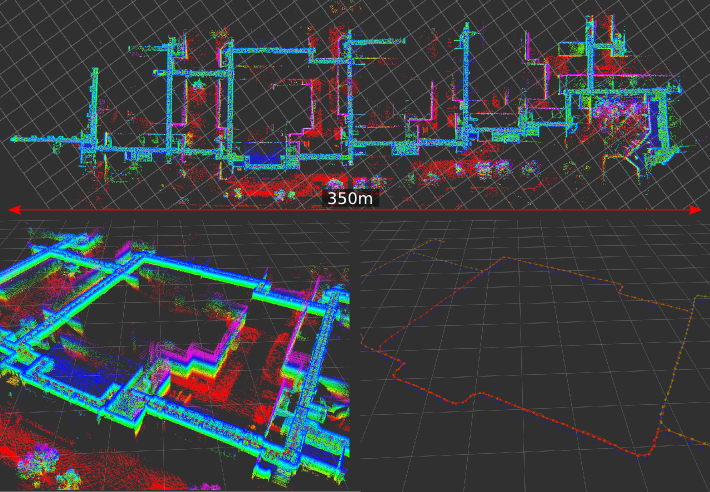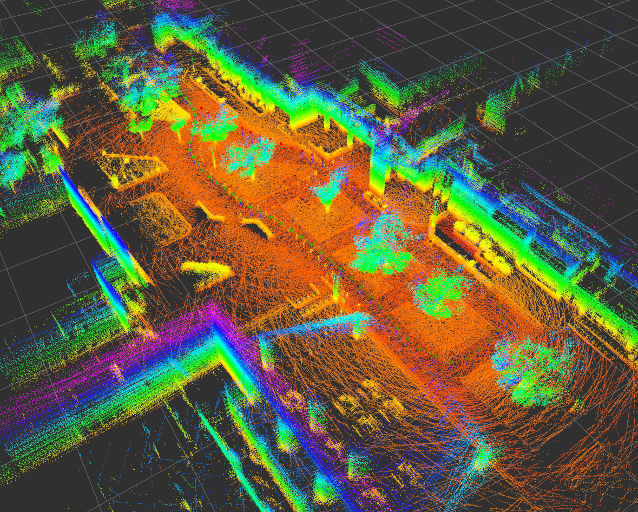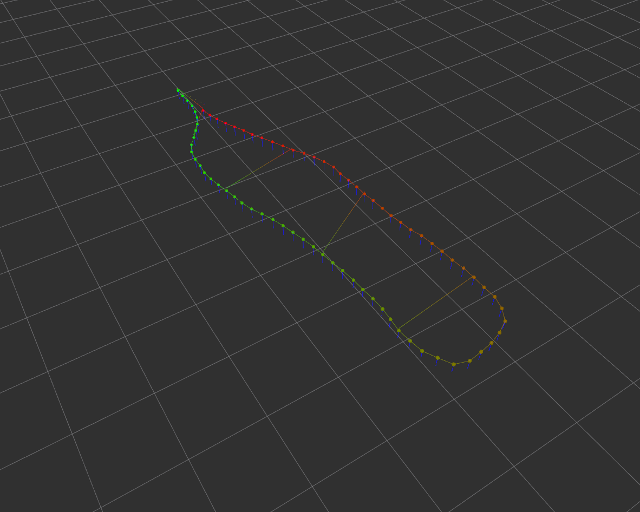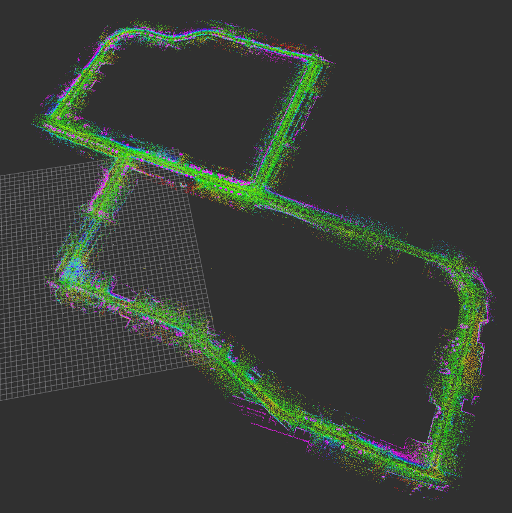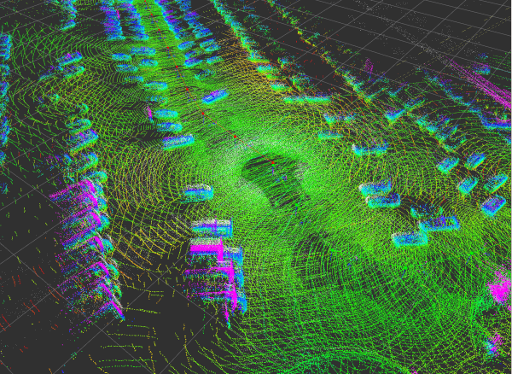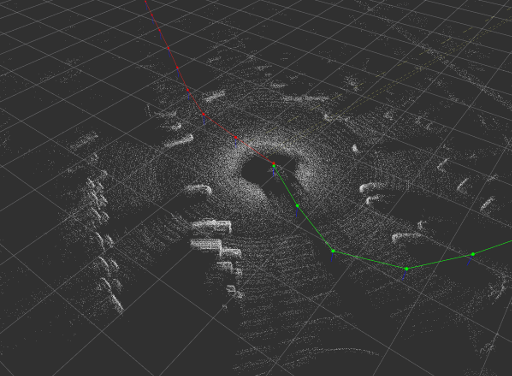hdl_graph_slam is an open source ROS package for real-time 3D slam using a 3D LIDAR. It is based on 3D Graph SLAM with NDT scan matching-based odometry estimation and loop detection. It also utilizes floor plane detection to generate an environmental map with a completely flat floor. We have tested this packaged mainly in indoor environments, but it can be applied to outdoor environment mapping as well.
hdl_graph_slam consists of four nodelets.
- prefiltering_nodelet
- scan_matching_odometry_nodelet
- floor_detection_nodelet
- hdl_graph_slam_nodelet
The input point cloud is first downsampled by prefiltering_nodelet, and then passed to the next nodelets. While scan_matching_odometry_nodelet estimates the sensor pose by iteratively applying a scan matching between consecutive frames (i.e., odometry estimation), floor_detection_nodelet detects floor planes by RANSAC. The estimated odometry and the detected floor planes are sent to hdl_graph_slam. To compensate the accumulated error of the scan matching, it performs loop detection and optimizes a pose graph which takes odometry, loops, and floor planes into account.
[Sep/1/2017] A GPS-based graph optimization has been implemented. hdl_graph_slam_nodelet receives GPS data (i.e., latitude, longitude) from /gps/geopoint and converts them into the UTM coordinate, and then it adds them into the pose graph. It effectively compensate the scan matching error in outdoor environments.
All the parameters are listed in launch/hdl_graph_slam.launch as ros params.
- /hdl_graph_slam/dump (std_srvs/Empty)
- save all data (point clouds, floor coeffs, odoms, and pose graph) to the current directory.
- /hdl_graph_slam/save_map (hdl_graph_slam/SaveMap)
- save generated map as a PCD file.
hdl_graph_slam requires the following libraries:
- OpenMP
- PCL 1.7
- g2o
Note that hdl_graph_slam cannot be built with older g2o libraries (such as ros-indigo-libg2o). Install the latest g2o:
git clone https://github.com/RainerKuemmerle/g2o.git
cd g2o
mkdir build && cd build
cmake .. -DCMAKE_BUILD_TYPE=RELEASE
make -j8
sudo make installThe following ROS packages are required:
- geodesy
- nmea_msgs
- pcl_ros
- ndt_omp
sudo apt-get install ros-indigo-geodesy ros-indigo-pcl_ros ros-indigo-nmea-msgs
cd catkin_ws/src
git clone https://github.com/koide3/ndt_omp.git[optional] bag_player.py script requires ProgressBar2.
sudo pip install ProgressBar2Example bag files (recorded in a small room):
- hdl_501.bag.tar.gz (raw data, 344MB)
- hdl_501_filtered.bag.tar.gz (downsampled data, 57MB, Recommended!)
rosparam set use_sim_time true
roslaunch hdl_graph_slam hdl_graph_slam_501.launchroscd hdl_graph_slam/rviz
rviz -d hdl_graph_slam.rvizrosbag play --clock hdl_501_filtered.bagWe also provide bag_player.py which adjusts the playback speed according to the processing speed of your PC. It allows processing data as fast as possible for your PC.
rosrun hdl_graph_slam bag_player.py hdl_501_filtered.bagYou'll see a generated point cloud like:
You can save the generated map by:
rosservice call /hdl_graph_slam/save_map "resolution: 0.05
destination: '/full_path_directory/map.pcd'"Bag file (recorded in an outdoor environment):
- hdl_400.bag.tar.gz (raw data, about 900MB)
rosparam set use_sim_time true
roslaunch hdl_graph_slam hdl_graph_slam_400.launchroscd hdl_graph_slam/rviz
rviz -d hdl_graph_slam.rvizrosbag play --clock hdl_400.bagFord Campus Vision and Lidar Data Set [URL].
The following script converts the Ford Lidar Dataset to a rosbag and plays it. In this example, hdl_graph_slam utilized the GPS data to correct the pose graph.
cd IJRR-Dataset-2
rosrun hdl_graph_slam ford2bag.py dataset-2.bag
rosrun hdl_graph_slam bag_player.py dataset-2.bagKenji Koide, Jun Miura, and Emanuele Menegatti, A Portable 3D LIDAR-based System for Long-term and Wide-area People Behavior Measurement, IEEE Transactions on Human-Machine Systems (under review) [PDF].
Kenji Koide, Active Intelligent Systems Laboratory, Toyohashi University of Technology [URL]
koide@aisl.cs.tut.ac.jp
